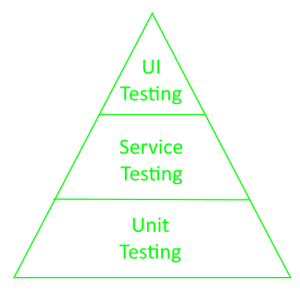Test automation is a broad area of processes and techniques that minimize human input in testing the software. Wikipedia has a good definition of test automation: "In software testing, test automation is the use of software separate from the software being tested to control the execution of tests and the comparison of actual outcomes with predicted outcomes."
Automation testing
There are many types of software testing, and we are mostly talking about levels of testing. I like the automation testing pyramid by Mike Cohen, which he described in his book Succeeding with Agile. The pyramid illustrates three levels: at UI, Service, and Unit test, each with its own set of challenges. Here is a proposed pyramid:

Beekn fits into the middle layer, targeting HTTP API services and applications.
Machine learning in automation testing
This book was published in 2010; that's more than ten years after I wrote this blog post. Advances in the field of Machine learning are substantial, and the automation testing industry embraced it well. Machine learning is not a new idea in our industry. There is an excellent source of information about the current state of AI and machine learning in software testing - Accelerating Software Quality: Machine Learning and Artificial Intelligence in the Age of DevOps, Kinsbruner, Eran. At Beekn, we are working on new approaches to use machine learning in software testing. We want to provide a modern and practical automation service that will enhance the specific software testing workflows.
Beekn mindset
Automation is at the core of Beekn mindset. By using it, the QA engineer spends less time defining and mocking the test data. We are also putting a strong emphasis on Zero-Install and Zero-Code/codeless principles, which is one of the seven Beekn pillars. We are also well aware of automation pitfalls and looking for ways to improve it.
1. Import
HTTP back-end systems nowadays use Swagger, the OpenAPI standard for documenting HTTP REST APIs. At Beekn, we provide the import procedure of Swagger doc. We can analyze them and provide you with a better way of testing HTTP APIs.
2. Generate
Once you import the definitions from your Swagger files, you need to prepare some tests. We use machine learning algorithms to mock up the known properties of requests and generate tests. You can always modify and replace the values, which allows maximum flexibility.
3. Run
Next, it's time to build, download and run the Beekn. Then you can relax and leave it to do its job - testing your back-end applications and systems.
If you want to learn more join our mailing list or Beekn Community.

